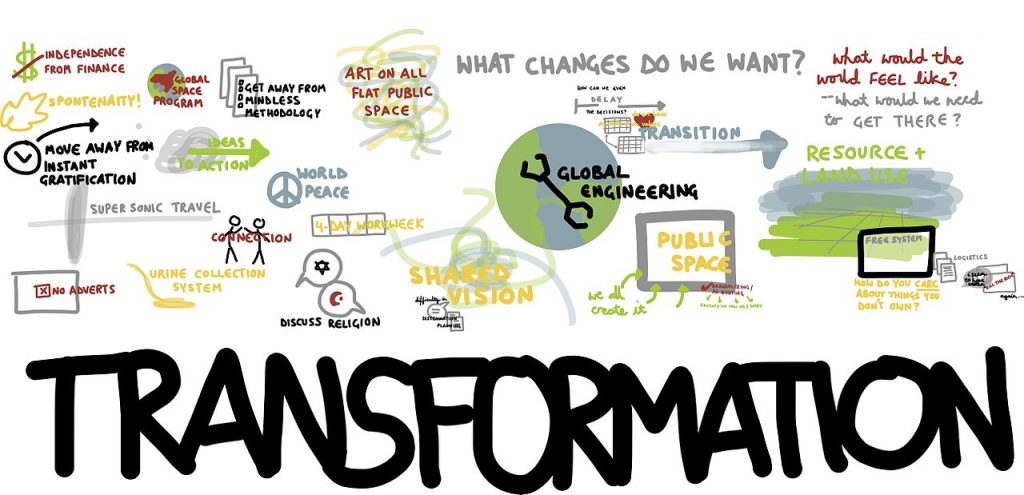The whole methodology of fulfilling business’ IT requirements has undergone a massive change. IT has seeped through so many business functions, processes, and tasks that it has become the single most potent lever of competitive advantage for businesses of all sizes and scales. As enterprises gear up to change for the future, they will encounter business transformation requirements that demand specialized IT applications. These business transformation requirements will either necessitate the migration from legacy technology to new platforms, or will mandate the creation of completely new technology systems to replace old ones.
As a part of any make vs. buy evaluation, enterprises need to look for products that are ready to help the cause of a business transformation. Evaluation process needs to thoroughly analyze product features, costs, alternatives, technology maturity, future readiness, and need for customizations and configurations.
In this guide, we answer some of the questions that plague the mind of IT leaders or decision makers when tasked with choosing the right product that can enable business transformation.
Make vs. buy
Why do we need a new product? Can’t the business requirement be fulfilled with an in-house technology? These are the first questions that need answering.
Any in-house development requires a budget. Once you arrive at the estimates, submit them to an IT governance board and IT architecture board to have their inputs. Make sure you deliberate long and hard on the basis of estimation, choice of estimation model, comparison with other IT products and systems, and extent of customization needed.

Then, construct thorough product evaluation, especially when the scope of implementation is large (three or more months). Eventually, this exercise will help you shortlist three to five options of both in-house and external tools and technologies. More importantly, the approach will help keep stakeholders from the governance board and architecture experts aligned with your efforts.
General evaluation model
With IT product evaluation, it’s all right to adopt a “horses for courses” approach where you tweak the evaluation model based on the scenario. However, it’s useful to keep a generic evaluation model in mind to make sure that your custom approach accounts for the major steps.
Requirement gathering: To begin, list the must-haves in terms of future state-of-business applications you need. Finalize the must-haves and good-to-have functionalities. Then, align the requirements in a manner that sits well with the IT standards adopted by your enterprise. If the requirement is complicated, prioritize the different functionalities and agree on a phased implementation.
Solution research: Provided you have done the make vs. buy analyses, you can make your solution research focused, and do this in minimal time. If you’re going for a vendor, enumerate the research sources you will target to prepare a potential set of service providers. Leading industry reports, periodic white papers, and market analyses reports released by consultancies such as Gartner and Forrester, and of course, your existing vendors — these make for the primary source of education and information on new technologies. Considering how quickly cloud-based solutions can be deployed, you’d be all right in investing time in this phase and making sure you understand your options.
RFPs and demonstrations: Next up, you’ll need to float the request for proposal (RFP) document and invite vendor bids. Negotiate hard with their presales teams to get product demonstrations. Though most vendors do have some basic demonstrations in place, look for second-level demonstrations that incorporate business use cases relevant to your business processes.

Sandbox implementations and contract finalization: Once you’ve honed in on a couple of vendors, request sandbox implementations of the new technologies, and evaluate them in terms of the core business process realization that you’re targeting. Once you develop a fair degree of confidence and comfort with a vendor, it’s time to finalize the contract and agree on well-documented timelines of the implementation.
Cutover, user training, and hyper-support: Let’s talk a little on the often ignored aspects of new product adoptions. Ask your vendor about the cutover strategies they’ll need to perform to make the new technology active and accessible on the go-live date. Then, make sure there is adequate inclusion of user training, both in the form of user manuals, documents, and flow charts, as well as classroom sessions. Also, look for products that come with extended hyper-support so that the post-go-live issues can be quickly resolved.
More guidelines to choose business transformation products
When you’re considering a few IT products that promise to transform some aspects of your business, it’s natural for the decision makers to be overwhelmed. However, the key here is to do the basics right and evaluate how well the product will deliver the promised transformation and how well will it blend with the existing IT setup of the organization. These general guidelines will help.
Don’t fall for oversimplified methods of product evaluation, such as checklists, unless you’re using these evaluations just to improve understanding and check prerequisites and bare minimum compliances.
Pay due attention to the state of the core technology on which the shortlisted IT products are based. Put your money in technologies that have already showcased their potential.
Consider cloud-based solutions over on-premises ones, particularly if the workloads are bound to increase in the future. This helps you manage scalability challenges and minimize upfront capital expenditures.
Look for products that can be easily integrated with your enterprise’s existing IT infrastructure and application ecosystem.
Look for products that don’t require major customizations and reconfigurations.
Final considerations
Choosing an advanced IT product that can massively overhaul the way your business works is certainly not an easy task. Considering the costs, time, and efforts, as well as the business transformation improvement potential at stake, the choice deserves thorough background work and thought investment. This guide helps you organize information and complete the product choice in a logical and hassle free manner.
Photo credit: Flickr / Gerd Leonhard



